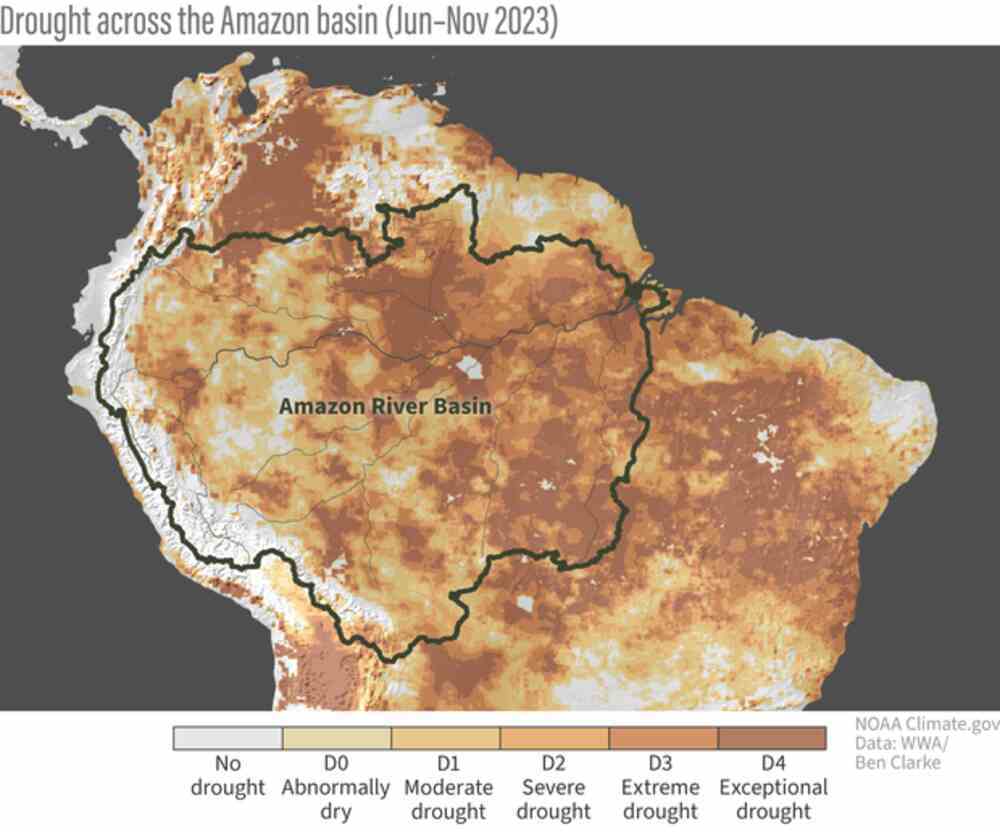Climate models inspire hope for our planet's future

According to a recent analysis by the World Weather Attribution project, human-caused global warming played a much larger role than El Niño in intensifying the 2023 Amazon drought. This drought has resulted in many communities being cut off from food supplies, markets for their crops, and health services, causing electricity blackouts and water rationing in some urban areas.
Through observations and supercomputer model simulations, a team of experts found that global warming had doubled the precipitation deficits from El Niño alone. Rising temperatures have amplified water stress, turning the 2023 drought into an "exceptional" one that has become the worst on record. While the research has not yet been peer-reviewed, the team used methods that have previously passed peer-review. Rapid response analyses using these methods have been published in scientific journals, such as their analysis of the 2021 heatwave in the Pacific Northwest and their analysis of record-setting flooding in Louisiana in 2016.
The findings of this analysis underscore the critical importance of addressing the climate crisis to prevent future disasters from happening. This includes curbing deforestation and reforesting cleared and degraded areas in the Amazon to restore the region's moisture-recycling capacity. Reforestation would act as a buffer to global warming until the world can achieve net-zero greenhouse gas emissions.
The supercomputer model simulations have brought to light the impact of global warming and call for immediate action toward mitigating its impact. As the world works to reduce greenhouse gas emissions and stave off further warming, we must take collective action and make the world a better place for future generations. Although the path may seem long, it is possible with the right measures and collective action. The time for action is now!

 How to resolve AdBlock issue?
How to resolve AdBlock issue?